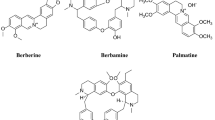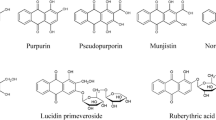Abstract
There is a continuous search for green and sustainable materials and processes in textile dyeing and finishing. In the current study, wool yarns were grafted with Sodium Alginate-Silver nanoparticles (SA-Ag NPs) and consecutively dyed with Cochineal or Madder. The weight gain of the samples was measured to find the optimized SA-Ag NPs initial concentration, and Scanning Electron Microscopy (SEM) was used to study their surface morphology. The effects of the initial dye concentration, pH, temperature on the color strength of the dyed samples were investigated. It was found that the pretreatment enhanced the dye-ability, antimicrobial, and antioxidant characteristics of the samples noticeably. Under the same dyeing conditions, the fixation of dyes on the treated wool fibers was noticeably higher than that of the untreated wool fibers. The colorfastness characteristics of the treated samples dyed with Cochineal or Madder were slightly improved. The results clearly showed that the application of SA-Ag NPs on the wool samples could be considered as a green finishing process with promising antioxidant and antimicrobial activities. A very high level of antimicrobial efficiency (99%) was achieved after the pretreatment, which remained as high as 90% even after ten repeated washing cycles.









Similar content being viewed by others
References
Ferrero F, Tonetti C, Periolatto M (2014) Adsorption of chromate and cupric ions onto chitosan-coated cotton gauze. Carbohydr Polym 110:367–373
Ferrero F, Periolatto M, Vineis C, Varesano A (2014) Chitosan coated cotton gauze for antibacterial water filtration. Carbohydr Polym 103:207–212
Gouda M (2011) Nano-zirconium oxide and nano-silver oxide/cotton gauze fabrics for antimicrobial and wound healing acceleration. J Ind Text 41:222–240
Maryan AS, Montazer M, Harifi T (2015) Synthesis of nano silver on cellulosic denim fabric producing yellow colored garment with antibacterial properties. Carbohydr Polym 115:568–574
Rajendran S, Anand SC (2002) Developments in medical textiles. Text Prog 32:1–42
Afzal S, Daoud WA, Langford SJ (2014) Superhydrophobic and photocatalytic self-cleaning cotton. J Mater Chem A2:18005–18011
Hou A, Sun G (2013) Multifunctional finishing of cotton fabrics with 3, 3, 4, 4’-benzophenone tetracarboxylic dianhydride: reaction mechanism. Carbohydr Polym 95:768–772
Nikolic T, Kostic M, Praskalo J, Pejic B, Petronijevic Z, Skundric P (2010) Sodiumperiodate oxidized cotton yarn as carrier for immobilization of trypsin. Carbohydr Polym 82(3):976–981
Zhuo J, Sun G (2013) Antimicrobial functions on cellulose materials introduced by anthraquinone vat dyes. ACS Appl Mater Interfaces 5:10830–10835
Dastjerdi R, Montazer M, Shahsavan S (2009) A new method to stabilize nanoparticles on textile surfaces. Colloids Surf A 345:202–210
Harifi T, Montazer M (2012) Past, present, and future prospects of cotton crosslinking: new insight into nanoparticles. Carbohydr Polym 88:1125–1140
Zhuo J, Sun G (2014) Light-induced surface graft polymerizations initiated by an anthraquinone dye on cotton fibers. Carbohydr Polym 112:158–164
El-Shafei A, El-Shemy M, Abou-Okeil A (2015) Eco-friendly finishing agent for cotton fabrics to improve flame retardant and antibacterial properties. Carbohydr Polym 118:83–90
Ibrahim NA, El-Gamal AR, Gouda M, Mahrous F (2010) A new approach for natural dyeing and functional finishing of cotton cellulose. Carbohydr Polym 82:1205–1211
Shahid I, Shahid M, Mohammad F (2013) Green chemistry approaches to develop antimicrobial textiles based on sustainable biopolymers-a review. Ind Eng Chem Res 52:5245–5260
Mihailović D, Šaponjić Z, Radoičić M, Radetić T, Jovančić P, Nedeljković J, Radetić M (2010) Functionalization of polyester fabrics with alginates and TiO2 nanoparticles. Carbohydr Polym 79:526–532
Zahran MK, Ahmed HB, El-Rafie MH (2014) Surface modification of cotton fabrics for antibacterial application by coating with AgNPs-alginate composite. Carbohydr Polym 108:145–152
Dehabadi VA, Buschmann HJ, Gutmann JS (2014) Spectrophotometric estimation of the accessible inclusion sites of β-cyclodextrin fixed on cotton fabrics using phenolic dyestuffs. Anal Methods 6:3382–3387
Martin A, Tabary N, Leclercq L, Junthip J, Degoutin S, Aubert-Viard F, Cazaux F, Lyskawa J, Janus L, Bria M, Martel B (2013) Multilayered textile coating based on a beta-cyclodextrin polyelectrolyte for the controlled release of drugs. Carbohydr Polym 93:718–730
Gaffer H, Gouda M, Abdel-Latif E (2012) Antibacterial activity of cotton fabrics treated with sulfadimidine azo dye/chitosan colloid. J Ind Text 42:392–399
Gouda M, Keshk SMAS (2010) Evaluation of multifunctional properties of cotton fabric based on metal/chitosan film. Carbohydr Polym 80:504–512
He J, Wang F, Wu Y, Huang Y, Zhang H (2011) Preparation of the water-soluble chitosan-coated oxidized regenerated cellulose gauze. Cellulose 18:1651–1659
Periolatto M, Ferrero F, Vineis C, Rombaldoni F (2013) Multifunctional finishing of wool fabrics by chitosan UV-grafting: an approach. Carbohydr Polym 98:624–629
Sharaf S, Higazy A, Hebeish A (2013) Propolis induced antibacterial activity and other technical properties of cotton textiles. Int J Biol Macromol 59:408–416
Wang PC, Okada N, Takezawa T (2004) Co-culture of glomerular epithelial cells and mesangial cells on collagen-gauze-fiber gel. Biochem Eng J 20:149–154
Xu Y, Huang C, Wang X (2013) Characterization and controlled release aloe extract of collagen protein modified cotton fiber. Carbohydr Polym 92:982–988
Chan LW, Ching AL, Liew CV, Heng PW (2007) Mechanistic study on hydration and drug release behavior of sodium alginate compacts. Drug Dev Ind Pharm 33:667–676
Deze EG, Papageorgiou SK, Favvas EP, Katsaros FK (2012) Porous alginate aerogel beads for effective and rapid heavy metal sorption from aqueous solutions: effect of porosity in Cu2+ and Cd2+ ion sorption. Chem Eng J 209:537–546
Goh CH, Heng PW, Huang EP, Li BK, Chan LW (2008) Interactions of antimicrobial compounds with crosslinking agents of alginate dressings. J Antimicrob Chemother 62:105–108
Goh CH, Heng PWS, Chan LW (2012) Cross-linker and non-gelling Na+ effects on multifunctional alginate dressings. Carbohydr Polym 87:1796–1802
Lin HY, Ciou SY (2010) Modifications of alginate-based scaffolds and characterizations of their pentoxifylline release properties. Carbohydr Polym 80:574–580
Rani VVD, Ramachandran R, Chennazhi KP, Tamura H, Nair SV, Jayakumar R (2011) Fabrication of alginate/nanoTiO2 needle composite scaffolds for tissue engineering applications. Carbohydr Polym 83:858–864
Paques JP, van der Linden E, van Rijn CJ, Sagis LM (2014) Preparation methods of alginate nanoparticles. Adv Colloid Interface Sci 209:163–171
Sun J, Tan H (2013) Alginate-based biomaterials for regenerative medicine applications. Materials 6:1285–1309
Enescu D (2008) Use of chitosan in surface modification of textile materials. Roum Biotechnol Lett 13:4037–4048
Li J, He J, Huang Y (2017) Role of alginate in antibacterial finishing of textiles. Int J Biol Macromol 94:466–473
Zhang R, Wang A (2015) Modification of wool by air plasma and enzymes as a cleaner and environmentally friendly process. J Clean Prod 87:961–965
Bajpai SK, Bajpai M, Sharma L (2012) Copper nanoparticles loaded alginate-impregnated cotton fabric with antibacterial properties. J Appl Polym Sci 126:319–326
Bechtold T, Mussak R (2009) Handbook of natural colorants. Wiley, Chichester
Kasiri MB, Safapour S (2014) Natural dyes and antimicrobials for green treatment of textiles. Environ Chem Lett 12:1–13
Sadeghi-Kiakhani M, Safapour S (2015) Salt-free reactive dyeing of the cotton fabric modified with chitosan-poly(propylene imine) dendrimer hybrid. Fibers Polym 16:1078–1081
Varadarajan G, Venkatachalam P (2016) Sustainable textile dyeing processes. Environ Chem Lett 14:113–122
Aryabadie S, Sadeghi-Kiakhani M, Arami M (2015) Antimicrobial and Dyeing studies of treated cotton fabrics by prepared Chitosan-PAMAM Dendrimer/Ag Nano-emulsion. Fibers Polym 16:2529–2537
Singh R, Jain A, Panwar S, Gupta D, Khare SK (2005) Antimicrobial activity of some natural dyes. Dyes Pigm 66:99–102
Sellimi S, Younes I, Ayed HB, Maalej H, Montero V, Rinaudo M, Dahia M, Mechichi T, Hajji M, Nasri M (2015) Structural, physicochemical and antioxidant properties of sodium alginate isolated from a Tunisian brown seaweed. Int J Biol Macromol 72:1358–1367
Derksen GC, Naayer M, Beek TA, Capelle A, Haaksman IK, Doren HA, Groot A (2003) Chemical and enzymatic hydrolysis of anthraquinone glycosides from madder roots. Phytochem Anal 14:137–144
Kalyoncu F, Cetin B, Saglam H (2006) Antimicrobial activity of common Madder (Rubia tinctorum L.). Phytother Res 20:490–492
Willemen H, Meijdenberg GJP, Beek TA, Derksen GCH (2018) Comparison of Madder (Rubia tinctorum L.) and weld (Reseda luteola L.) total extracts and their individual dye compounds with regard to their dyeing behaviour, colour, and stability towards light. Color Technol 135:40–47
Safapour S, Sadeghi-Kiakhani M, Doustmohammadi S (2019) Chitosan-cyanuric chloride hybrid as an efficient novel bio-mordant for improvement of cochineal natural dye absorption on wool yarns. J Text Ind 110:81–88
Baines D, Seal R (2012) Natural food additives, ingredients and flavourings. Woodhead Publishing Ltd, New York
Lee KY, Mooney DJ (2012) Alginate: properties and biomedical applications. Prog Polym Sci 37:106–126
Pawar SN, Edgar KJ (2012) Alginate derivatization: a review of chemistry, properties and applications. Biomaterials 33:3279–3305
Singh B, Kumar A, Singh B (2011) Development of silver particle impregnated hydrogel by radiation induced cross-linking for wound dressing applications. Am J Drug Deliv Ther 5:1–7
González EA, García EM, Nazareno MA (2010) Free radical scavenging capacity and antioxidant activity of cochineal (Dactylopius coccus C.) extracts. Food Chem 119:358–362
Sadeghi-Kiakhani M (2015) Eco-friendly dyeing of wool and nylon using Madder as a natural dye: kinetic and adsorption isotherm studies. Int J Environ Sci Technol 12:2363–2370
Sadeghi-Kiakhani M, Tehrani-Bagha AR, Gharanjig K, Hashemi E (2019) Use of pomegranate peels and walnut green husks as the green antimicrobial agents to reduce the consumption of inorganic nanoparticles on wool yarns. J Clean Prod 231:1463–1473
Singh HB, Kumar AB (2014) Handbook of natural dyes and pigments. Woodhead Publishing India in Textiles, New York
Acknowledgements
This research paper has been extracted from master thesis, entitled “Study on dyeing and antimicrobial properties of woolen yarn treated with chitosan-alginate-silver nano-particles”, fulfilled by Sara Sadat Habibzadeh under supervision of Siyamak Safapour and Mousa Sadeghi-Kiakhani at Tabriz Islamic Art University. Hereby, the authors would like to express their sincere gratitude for “Tabriz Islamic Art University” and “Institute for Color Science and Technology” for all the supports.
Author information
Authors and Affiliations
Corresponding author
Additional information
Publisher's Note
Springer Nature remains neutral with regard to jurisdictional claims in published maps and institutional affiliations.
Rights and permissions
About this article
Cite this article
Sadeghi-Kiakhani, M., Safapour, S., Habibzadeh, S.A. et al. Grafting of Wool with Alginate Biopolymer/Nano Ag as a Clean Antimicrobial and Antioxidant Agent: Characterization and Natural Dyeing Studies. J Polym Environ 29, 2639–2649 (2021). https://doi.org/10.1007/s10924-021-02046-0
Accepted:
Published:
Issue Date:
DOI: https://doi.org/10.1007/s10924-021-02046-0




